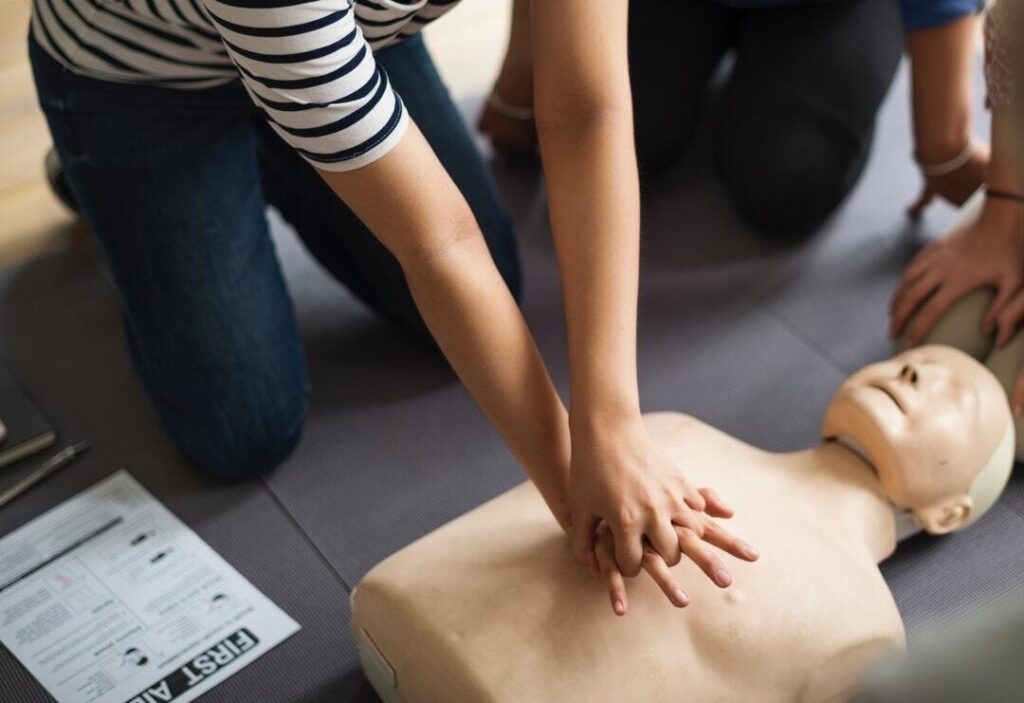What would you do if someone suddenly stopped breathing right in front of you? Emergencies can happen anywhere-at home, at work, or in public spaces.
In those first few minutes, quick action can mean the difference between life and death. That’s where Basic Life Support (BLS) training comes in.
BLS teaches people how to respond effectively when someone is in cardiac arrest or choking. It provides the knowledge and confidence needed to take action in critical situations.
In this blog, discover essential BLS skills that truly make a difference. Learn how to save lives with certified training and simple techniques.
Understanding What Basic Life Support Means
Basic Life Support refers to the care provided to someone experiencing a life-threatening emergency. It includes key actions like chest compressions, rescue breathing, and keeping the airway open.
BLS is commonly used by first responders, healthcare workers, and trained bystanders. It is meant to keep blood and oxygen flowing until advanced help arrives. Knowing BLS can make a huge impact during those critical early moments.
The Importance of High-Quality CPR
Cardiopulmonary resuscitation (CPR) is a major part of BLS. CPR involves pressing hard and fast on the chest to help pump blood to the brain and other organs.
High-quality CPR improves the chances of survival after cardiac arrest. It’s important to learn the right rhythm, depth, and hand placement for chest compressions. BLS training includes guided practice to build confidence in performing CPR correctly.
Airway Management Techniques
Keeping the airway clear is another vital BLS skill. When someone becomes unconscious, the tongue can block the throat, stopping breathing.
Training teaches how to use simple head-tilt and chin-lift methods to open the airway. BLS also covers how to check for normal breathing and what to do if the airway is blocked. These steps are crucial to help someone breathe again.
Using Automated External Defibrillators (AEDs)
An AED is a portable device that checks the heart and delivers a shock if needed. BLS courses show how to use AEDs quickly and safely. These devices are often found in public places like airports, malls, and schools.
Learning to apply the AED pads and follow the device prompts is easy with practice. Proper AED use, along with CPR, can greatly increase survival rates.
Responding to Choking Emergencies
Choking can block the airway and become fatal within minutes. BLS training shows how to recognize the signs of choking in adults, children, and infants.
It teaches how to perform abdominal thrusts, also known as the Heimlich maneuver. You’ll also learn what to do if a person becomes unconscious while choking. Acting fast and correctly can save someone from serious harm or death.
Getting Certified and Staying Updated
BLS certification helps people stay prepared for real emergencies. Many training programs offer hands-on practice and online learning options.
Certification is usually valid for two years and includes updated guidelines. Regular renewal ensures that your skills stay fresh and effective. To find a course near you or to sign up for a class, visit website and choose a training provider that fits your schedule.
Saving Lives with Basic Life Support Skills
Basic Life Support training teaches everyday heroes how to act fast and save lives. Whether it’s performing CPR, using an AED, or managing a choking incident, these skills make a big impact. With proper training, anyone can stay calm and take control in an emergency.
It’s not just for medical professionals-BLS is for parents, teachers, co-workers, and concerned citizens. Learning these life-saving techniques helps create safer communities for everyone.
Did you like this guide? Great! Please browse our website for more!






